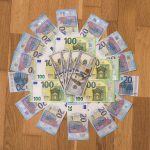Gold XAUUSD loses ground, falling below $1930. Prior to the FOMC announcement. As the deadline for the US Federal Reserve decision draws near. T
he price of gold has decreased. Following the first batch of data from a packed US economic docket. Being was less favorable than anticipated, was announced, the price of gold retraced from the day’s top and failed to hold to previous gains.
Additionally, a weak US Dollar (USD) limited the decline in the XAUUSD while US Treasury bond yields kept falling. The XAUUSD is trading at about $1925.
US economic reports were inconsistent before to the FOMC meeting.
In anticipation of the Fed’s announcement on monetary policy, Wall Street is still down. The ADP National Employment Change, which tracks private hiring, reported that employers hired 106K people. Far fewer than the 178K anticipated.
According to US economic statistics, indicating that the job market is continuing to loosen. Later, the JOLTs Job Openings data revealed that the number of openings increased to 11.01M, above projections of 10.25M.
Two enterprises also updated their industrial activity data, demonstrating that factory output is still in a contractionary cycle. The S&P Global Manufacturing PMI for January increased by 49.9 points over the 46.8 consensus projections.
Beating expectations. but remaining in the recessionary range. The ISM Manufacturing PMI for January fell to 47.4, under December’s reading of 48.4, and fell for the third consecutive month, bringing the index to its lowest point after May 2020.
Gold Bulls Appears Weary After a Successful Run into 2023
On Wednesday, gold prices are still stuck below the crucial psychological threshold of $2000/ounce .As investors wait to see what the US Federal Reserve will do. However, there are some indications that the long-running metals rally is waning, and after the Fed has finished speaking, the issue will undoubtedly come up again.
Increased interest rates are likely to be bad for gold. It can be anticipated that it will perform poorly as a non-yielding asset. Whereas ‘risk-free’ paper, such as US Treasuries, offers a better chance of reward.
Nevertheless, despite increased rates, gold has had a solid demand since November. There seems to be more than enough to support gold’s usual haven demand amid recession. Worries in many major economies, the continuing crisis in Ukraine, and still-rampant inflation.
Technical Perspective
In order to take prices below an uptrend line that had previously been intact since the low points of early November the year before, the wide trading range observed on Tuesday was significant for gold.
Nevertheless, it is a guarantee that the anticipation of the Fed will have slowed activity. In any event, certainty that gold has practically been a one-way bullish bet. Ever since, some stabilization is likely to be a very positive development, even from the perspective of the bulls.
Those bulls won’t have much to fear about as long as that stability occurs above even the first Fibonacci retracement of the increase up from the lows in November to the peaks in late January.
At $1869.29, the retracement is significantly underneath the existing markets .And is at a range that has not been tested as January 9.
However, before attempting to climb back to the top of last March above $2000, the price must first use that platform to steadily revisit its high of $1947.22 on January 25.
Unfortunately, traders’ sentiment statistics is not very useful as a directional cue. At 10:30 GMT on Wednesday, there were exactly equal numbers of bulls and bears.
The long-term trend for gold, though, appears to be far less obscurely optimistic. Prices are still far above a 2006-era uptrend line.
Gold Short Term Perspective
The 4-hour graphic illustrates that the short-term outlook for XAUUSD is neutral. The metal drifts aimlessly around the 20 SMA. While the technical indicators are stuck at their midpoints. At the same time, gold is rising just above bullish 100 and 200 SMAs, suggesting that $2,000 may soon be tested.
Gold Key Levels – XAUUSD









